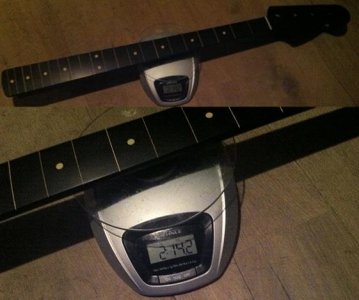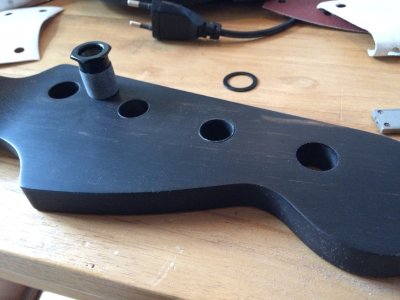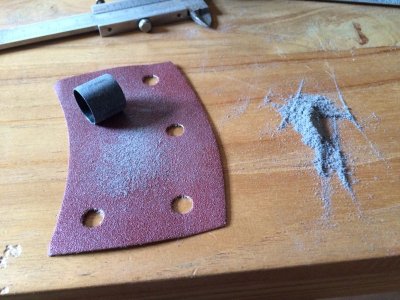Hi everyone,
i'm building a fretless Jazz Bass with an all ebony showcase neck.
I ordered some Hipshot ultralites 1/2 inch, because I thought the holes in the headstock were standard fender size. Well, after fitting the ultralites I came to the conclusion that my headstock was drilled for Schaller BML's (which I don't like at all).
Now I came up with a simple remedy. I'm going to have an acquaintance of mine make 4 metal rings that have the outside diameter of the 'bml-holes' and an inside diameter that matches the ultralites.
I'm going to hammer the rings in the headstock so it will fit the ultralites exactly.
Now for my question...should I make the rings out of aluminum (same as the ultralites) or should I make them out of stainless steel, which is much harder, but a tad heavier.
The rings will be quite thin, so even stainless steel wouldn't get too heavy. Then again, to prevent neck-drop, lighter is better. What will be the best for transmitting the string vibrations to my neck? What would you do?
Thanks guys!
i'm building a fretless Jazz Bass with an all ebony showcase neck.
I ordered some Hipshot ultralites 1/2 inch, because I thought the holes in the headstock were standard fender size. Well, after fitting the ultralites I came to the conclusion that my headstock was drilled for Schaller BML's (which I don't like at all).
Now I came up with a simple remedy. I'm going to have an acquaintance of mine make 4 metal rings that have the outside diameter of the 'bml-holes' and an inside diameter that matches the ultralites.
I'm going to hammer the rings in the headstock so it will fit the ultralites exactly.
Now for my question...should I make the rings out of aluminum (same as the ultralites) or should I make them out of stainless steel, which is much harder, but a tad heavier.
The rings will be quite thin, so even stainless steel wouldn't get too heavy. Then again, to prevent neck-drop, lighter is better. What will be the best for transmitting the string vibrations to my neck? What would you do?
Thanks guys!





